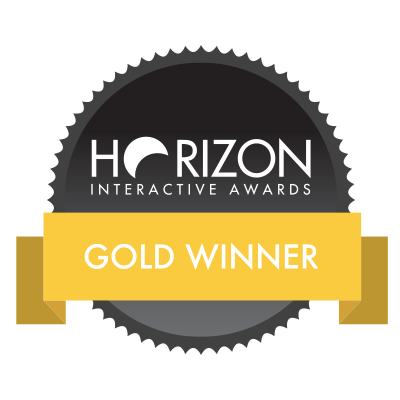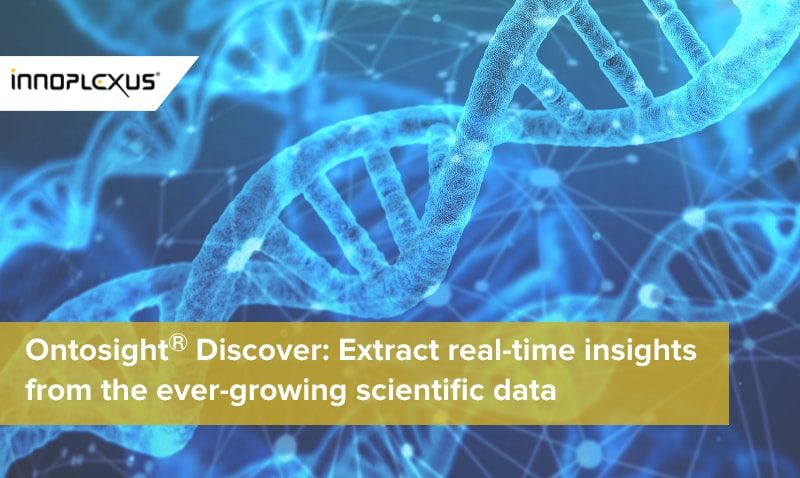
Ontosight® – Biweekly NewsletterJune 17th – June 30th, 2024 –Read More

Ontosight® – Biweekly NewsletterJune 17th – June 30th, 2024 –Read More
May 24
Apr 24

Innoplexus wins Horizon Interactive Gold Award for Curia App
Read More
The pharmaceutical industry saves millions of lives every year, and in doing so, it needs to constantly improve existing therapies, find new ones, and take advantage of the large volume of growing scientific and medical data. It is often a herculean task to access all relevant data in real time, let alone make connections in order to identify new patterns and gain insights which can reduce manual efforts and accelerate the process of drug development. Huge amounts of effort and time are consumed to find potential and novel drug candidates and in creating hypotheses that support the possibility of new drug discovery. However, due to ever-increasing scientific data, short timelines, obsolete methodologies, and high costs, necessary insights are overlooked and drug companies take ill-informed decisions.
In 2016, the biopharmaceutical industry in the US spent $90 billion on R&D. What’s even more alarming is that 20% of the R&D expenditure is wasted globally every year; failed clinical trials accounting for the largest expense. It takes 10-12 years for the development of a new drug at an average cost of around $2.6 billion1. However, despite the high costs and long timelines, the probability of a drug getting approved is only 10-12%. According to researchers at the Johns Hopkins Bloomberg School of Public Health, trials with less than 100 patients result in a loss of around $6 million, while those with more than 1000 patients waste around $77 million2.
The major factors contributing to the failure of clinical trials include inadequate enrollment, missed deadlines, site exhaustion, unwanted toxicity level, overspending of budget, etc. The right approach, access and analytics methodology to utilize data can help to overcome the failure causing factors. The capability to search through millions of continuously increasing documents and literature (publications, clinical trials, congresses, patents, grants, drug profiles, and gene profiles, etc.), identify connections between biological entities such as diseases, genes, molecular targets, pathways, and drugs comes with its own challenges.
A new research paper is published on the topic of immunology every 30 minutes. A researcher spends 1 hour to annotate a paper manually and 2.5 hours to analyze his findings. This makes it impossible for him to stay abreast with real-time information. In 2011, Dr. Peter Densen estimated that medical data will double every 73 days by 20203. It is not possible to keep up with the pace of this data and extract real-time, relevant, and accurate insights that can be used as a basis of important decisions in the pharmaceutical industry.
Life sciences data is a treasure trove of information, insights, and useful connections. But it is only useful if insights are actually retrieved from it in real-time to enhance and accelerate future efforts. AI can accelerate big data analytics that may take weeks to do otherwise. With the help of cutting-edge technologies, information can be extracted 80% faster than manual approaches. AI can be leveraged by experts at various stages of drug discovery to expand options for researchers involved in computation-based research (in vitro, ex vivo, in silico) and laboratory research, and to facilitate bioinformatics and translational medicine.
Innoplexus, a global AI-champion, facilitates real-time data analytics. It leverages its proprietary technologies to assist pharma companies with real-time insights from the ever-growing scientific and medical data. With the realization that medical language differs greatly from how a layman interacts and that Natural Language Processing is not enough to understand the life science jargon used by medical scientists, Innoplexus developed an ontology for life sciences. This self-learning ontology consists of over 30 million life science terms and concepts. Along with this ontology, Innoplexus uses its proprietary framework CAAVTM (Crawl, Aggregate, Analyze, Visualize) to collect, curate, and clean medical data from upto 95% of the world wide web.
An end to end discovery engine for life sciences that uses artificial intelligence to help generate continuous, real-time insights, spanning all therapeutic areas and indications. The engine uses the most comprehensive life sciences ontology to generate relevant results and help accelerate research and development.

Ontosight® Discover leverages real-time, updated data from published & presented literature, research grants & theses, human trials, news & regulatory information, patient & physician opinions etc. to provide contextual and relevant search results. The engine allows researchers to search for dissimilar concepts and receive previously unknown insights with its holistic and deep-dive functionalities. It is a great tool for those who need relevant, accurate insights from the vast data ocean of life sciences on their fingertips anytime, anywhere.
“Big data” grows bigger every day. Today’s pharma leaders need to manage this larger volume of data in real time. Nonetheless, they critically need to generate useful and relevant insight from this ever-increasing volume.
Ontosight® Discover has revolutionized the way researchers discover new publication, patents, theses, clinical trials, scientific news, treatment guidelines, deals, regulatory updates, and grants. This comprehensive engine provides all possible scientific information in one place. One of the unique features of Ontosight® Discover is grants. Most of the time, huge amounts of research funding, time, and effort are wasted merely for the reason that researchers are not completely aware of the ongoing projects in the scientific community and thus, embark on a similar project being simultaneously conducted somewhere else. This leads to scientific scooping. Ontosight® Discover prevents scientific scooping and opens new avenues of research. The Discover module also leverages more than one million theses and dissertations from top 500 universities.
For pharmaceutical companies, the Ontosight® platform offers users highly targeted, real-time essential recommendations to maximize value and stay competitive in drug discovery, clinical trial prediction, and biomarker identification. Ontosight® recommendations are inductive, scientifically validated and contextual, thus enabling pharma to make informed decisions and investments.
References:
1.New drug is $2.6 billion; approval rate for drugs entering market is less than 12%. Policy & Medicine. https://www.policymed.com/2014/12/a-tough-road-cost-to-develop-one-new-drug-is-26-billion-approval-rate-for-drugs-entering-clinical-de.html. Updated March 21, 2019. Accessed July 2, 2019.
2.Cost of Clinical Trials for New Drug FDA Approval Are Fraction of Total Tab. John Hopkins Bloomberg School of Public Health https://www.jhsph.edu/news/news-releases/2018/cost-of-clinical-trials-for-new-drug-FDA-approval-are-fraction-of-total-tab.html Accessed July 2, 2019.
3.Densen P. Challenges and opportunities facing medical education. Trans Am Clin Climatol Assoc. 2011;122:48-58.
The cost of developing a new drug roughly doubles every nine years (inflation-adjusted) aka Eroom’s law. As the volume of data…
There was a time when science depended on manual efforts by scientists and researchers. Then, came an avalanche of data…
Collaboration with key opinion leaders and influencers becomes crucial at various stages of the drug development chain. When a pharmaceutical…
Data are not the new gold – but the ability to put them together in a relevant and analyzable way…
Artificial intelligence, or AI, is gaining more attention in the pharma space these days. At one time evoking images from…
Artificial intelligence (AI) is transforming the pharmaceutical industry with extraordinary innovations that are automating processes at every stage of drug…
There is a lot of buzz these days about how artificial intelligence (AI) is going to disrupt the pharmaceutical industry….
Drug discovery plays a key role in the pharma and biotech industries. Discovering unmet needs, pinpointing the target, identifying the…
The pharmaceutical industry spends billions on R&D each year. Clinical trials require tremendous amounts of effort, from identifying sites and…
Training algorithms to identify and extract Life Sciences-specific data The English dictionary is full of words and definitions that can be…
The early 1970s introduced the world to the idea of computer vision, a promising technology automating tasks that would otherwise…
Summary: AI could potentially speed drug discovery and save time in rejecting treatments that are unlikely to yield worthwhile resultsAI has…